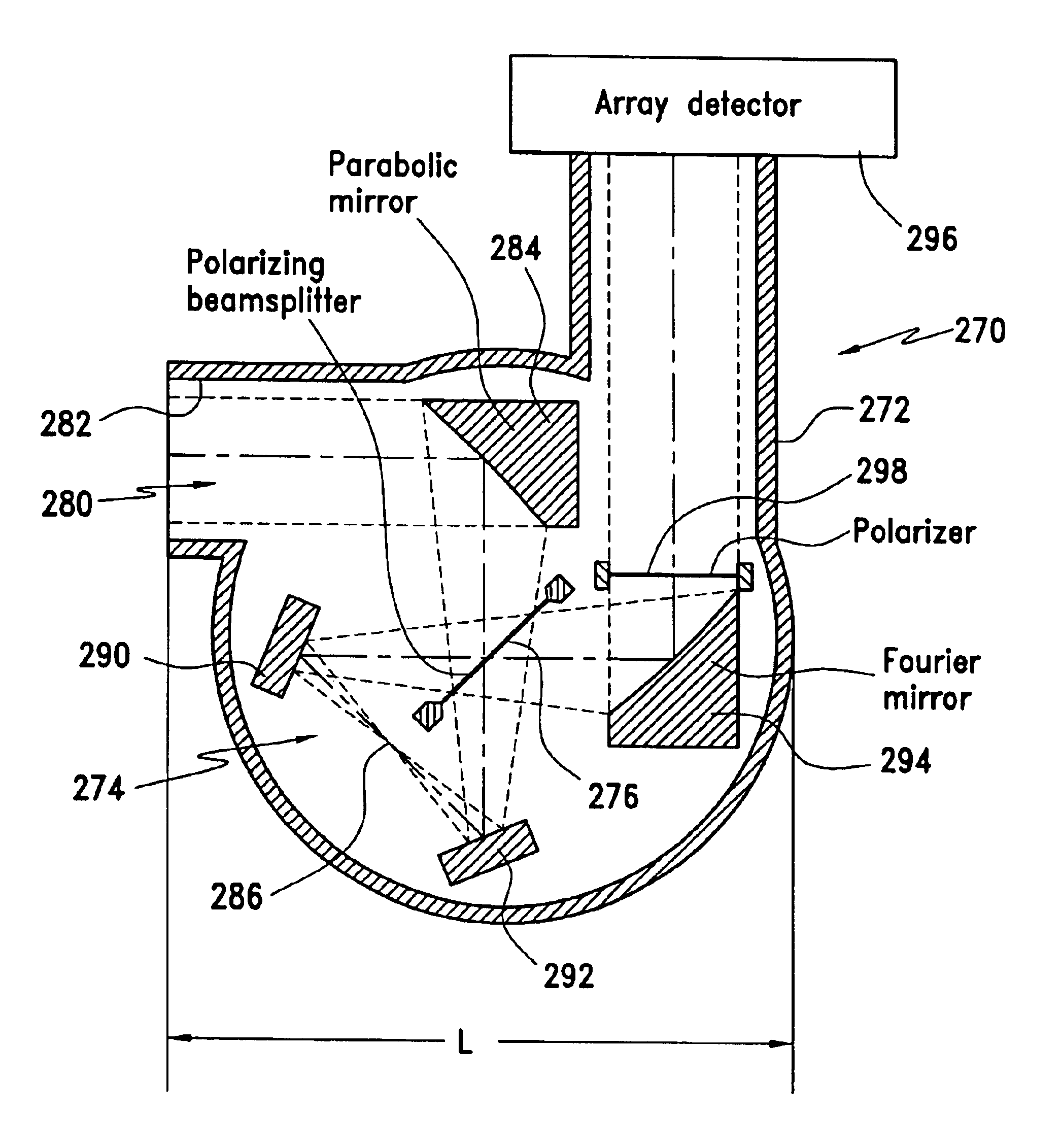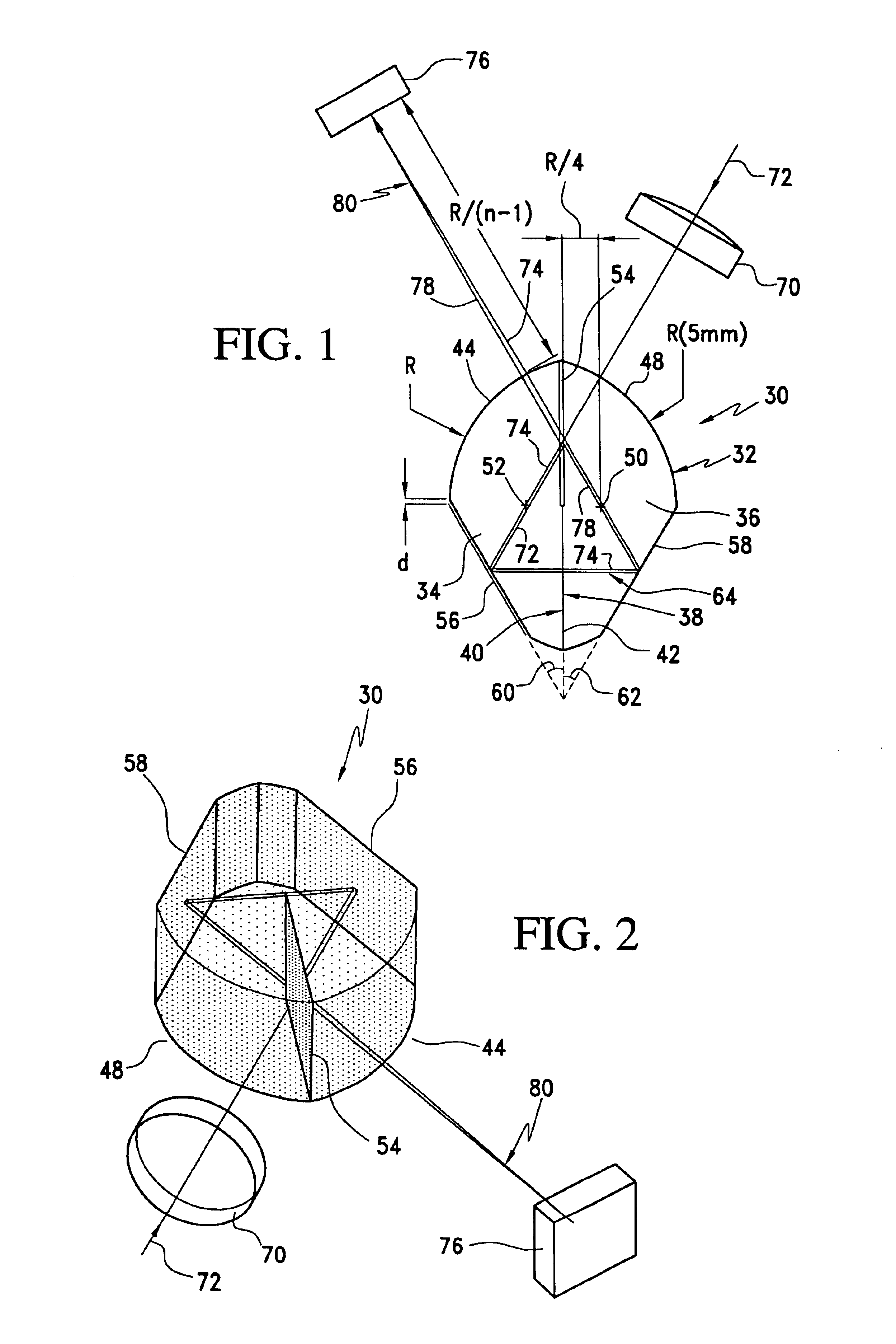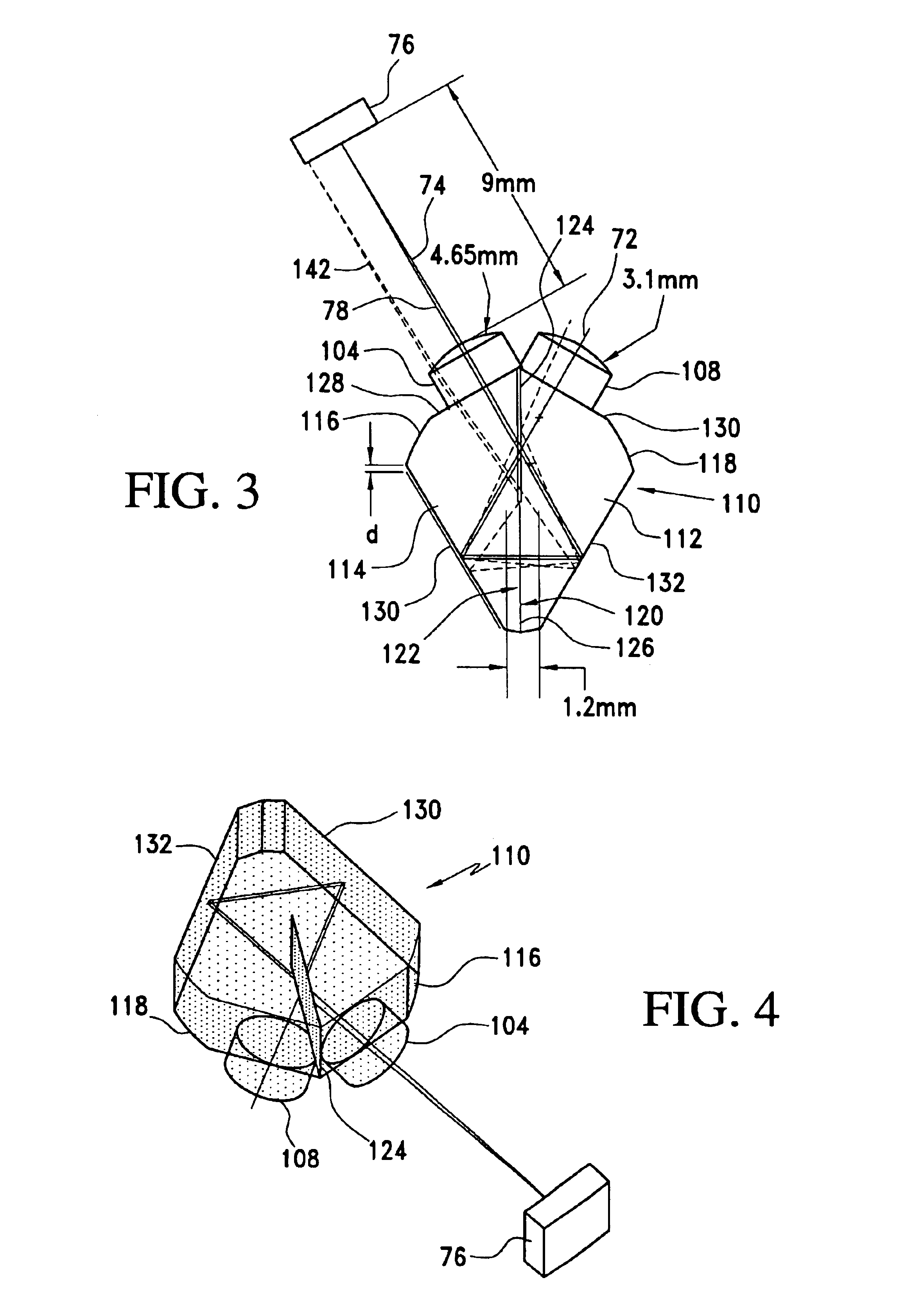Miniaturized holographic fourier transform spectrometer with digital aberration correction
a fourier transform spectrometer and digital aberration technology, applied in the field of optical spectrometers, can solve the problems of greatly degraded optical resolution and distortion of frequency spectrum
- Summary
- Abstract
- Description
- Claims
- Application Information
AI Technical Summary
Benefits of technology
Problems solved by technology
Method used
Image
Examples
first embodiment
[0023]In the invention, a cylindrical HFTS 30 is illustrated by a ray tracing shown in FIG. 1 and in a three-dimensional schematic presented in FIG. 2. The interferometer 30 can be produced from a single glass rod 32 of an arbitrary radius R. The rod is cut along planes parallel to its longitudinal axis to form left and right segments 34 and 36 having respective cut surfaces 38 and 40 which are polished and assembled along line 42 to form the interferometer 30. The segments 34 and 36 incorporate respective cylindrical surfaces 44 and 48 which are portions of the rod, and the cut surfaces are located so that, when assembled, the axis 50 of cylindrical surface 44 lies in segment 36, and the axis 52 of cylindrical surface 48 lies in segment 34. Each of the axes 50 and 52 is at a distance R / 4 from the line 42 where the polished surfaces 38 and 40 are joined. Before assembly, a coating 54 is deposited on one or both of the polished surfaces 38 and 40 to form a beamsplitter which lies in ...
third embodiment
[0036]In the invention, illustrated in FIGS. 5 and 6, a simplified interferometer 200 is fabricated from standard optical components readily available from most suppliers. In this embodiment, the interferometer 200 is fabricated from two Littrow prisms 202 and 204 of BK7 glass, having surfaces formed by bases 206, 208, sides 210, 212, and hypotenuses 214, 216, respectively. A beamsplitter 220 is formed on one of the surfaces 214 or 216, and these surfaces are then glued together using an index matching glue to form the interferometer.
[0037]Surfaces 210 and 212 are coated to form mirrors, and lenses 222 and 224, also of BK7 glass, are secured to the surfaces 206 and 208, respectively. The lenses are selected so that the focal point 226 for lens 222 is located in prism 204, while the focal point 228 for lens 224 is located in prism 202, as illustrated by the ray diagram in FIG. 5. As described above, an impinging light beam 72 enters the interferometer through lens 224 and is split at...
PUM
 Login to View More
Login to View More Abstract
Description
Claims
Application Information
 Login to View More
Login to View More - R&D
- Intellectual Property
- Life Sciences
- Materials
- Tech Scout
- Unparalleled Data Quality
- Higher Quality Content
- 60% Fewer Hallucinations
Browse by: Latest US Patents, China's latest patents, Technical Efficacy Thesaurus, Application Domain, Technology Topic, Popular Technical Reports.
© 2025 PatSnap. All rights reserved.Legal|Privacy policy|Modern Slavery Act Transparency Statement|Sitemap|About US| Contact US: help@patsnap.com



